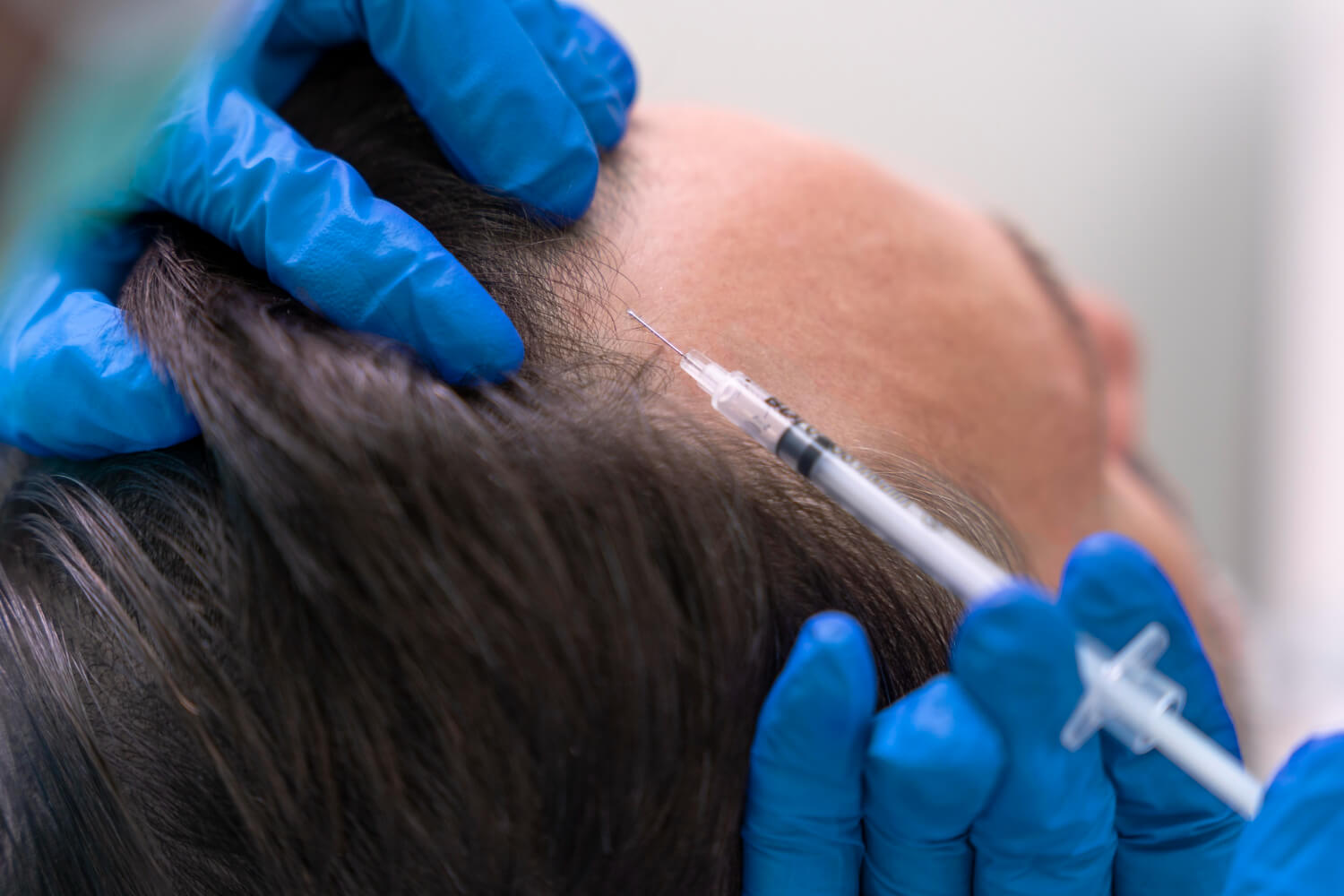What Is PRP?
PRP, or Platelet-Rich Plasma, is a regenerative treatment that uses the body’s own natural healing components to stimulate hair growth and tissue repair. It has gained popularity in dermatology, aesthetics, and hair restoration as a non-surgical solution to treat thinning hair and promote stronger, healthier growth.
In this article, we’ll explain what PRP is, how it works, and why it’s commonly used in hair restoration.

What Is Platelet-Rich Plasma?
PRP is a concentration of platelets derived from your own blood. Platelets are small blood cells that play a key role in healing injuries by releasing growth factors that aid in tissue regeneration.
To create PRP, a small amount of your blood is drawn and processed in a centrifuge. This separates the plasma and platelets from red and white blood cells. The resulting PRP is then injected into the area requiring treatment — such as the scalp for hair loss.
How Does PRP Help With Hair Loss?
PRP works by:
Stimulating dormant hair follicles to re-enter the growth phase
Increasing blood flow to the hair root
Improving the thickness and quality of existing hair
Slowing down hair thinning
It is often used to treat androgenetic alopecia (male or female pattern baldness) and general hair thinning. PRP is also used after hair transplant surgery to support healing and enhance graft survival.
The PRP Treatment Process
Consultation: A specialist evaluates your hair and scalp condition to determine if PRP is right for you.
Blood Draw: A small amount of blood is taken from your arm, similar to a routine test.
Centrifugation: The blood is spun to separate the platelet-rich plasma.
Injection: PRP is injected into the areas of the scalp that are thinning or experiencing hair loss.
The procedure takes about 30 to 60 minutes and requires no downtime. Most patients return to normal activities the same day.
How Many Sessions Are Needed?
PRP is usually done as a series of 3–4 sessions, spaced about 4–6 weeks apart, followed by maintenance treatments every 4–6 months depending on results.
Consistency is key for long-term benefits.
Benefits of PRP for Hair
Minimally invasive
Autologous (uses your own blood — no risk of allergic reaction)
Safe with minimal side effects
Improves hair texture, thickness, and density
Complements other hair loss treatments
Are There Any Side Effects?
PRP is considered very safe since it uses your own biological material. However, mild side effects may include:
Temporary redness or soreness at injection sites
Minor swelling or bruising
Headache or tenderness (usually short-lived)
Serious complications are extremely rare when performed by qualified professionals.
Is PRP Right for You?
PRP is ideal for:
Men and women experiencing early-stage hair thinning
Patients who want to enhance hair transplant results
Individuals seeking non-surgical solutions
Those looking to improve scalp health and hair quality
However, it may not be effective for patients with advanced baldness or inactive hair follicles. A consultation is essential to assess candidacy.
Final Thoughts
PRP is a safe, natural, and effective treatment for hair thinning and early-stage hair loss. By harnessing your body’s own regenerative powers, it offers a gentle yet powerful approach to improving hair density and scalp health — with minimal discomfort and no surgery.
If you’re curious about PRP for hair restoration, consult a licensed provider to explore your options and create a customized treatment plan.
